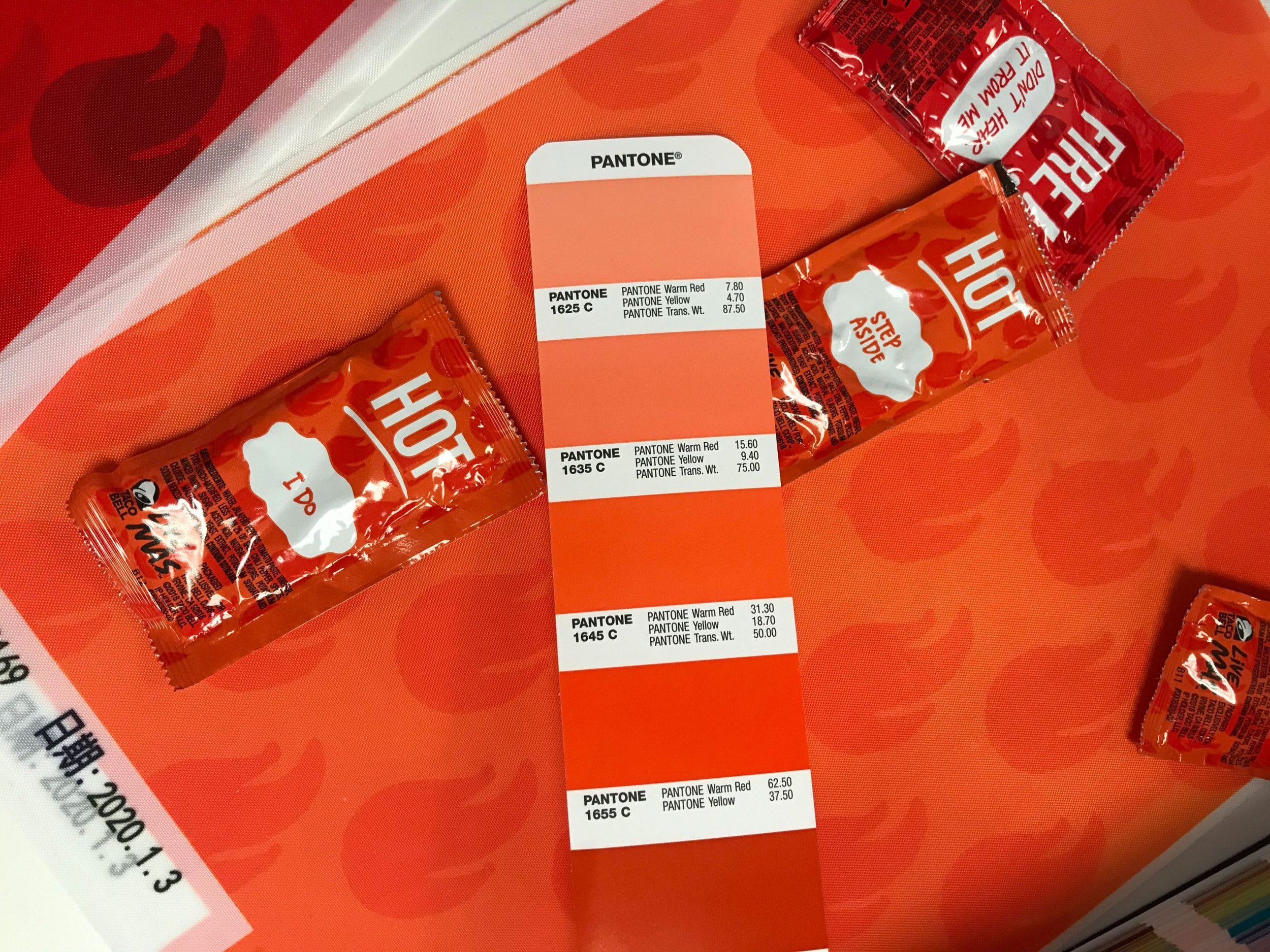One alumna turns the fast-food phenomenon into limited-edition luggage
It’s a brand that needs no introduction, paired with another almost equally ubiquitous. Taco Bell. CALPAK.
If the crossover-collaboration seems like a stretch, that’s how it felt to Shelby Taylor ’16, design lead at CALPAK production studio in Los Angeles, California. At least until they—unwrapped—the concept.
“You love Taco Bell so much, but it’s not screaming Taco Bell at you,” said Taylor. “We tried to make sure that from the outside, it still looked like a normal piece of luggage, but with just that tiny bit of messaging or that tiny bit of color.”
Taco Bell had just come off the “Taco Bell Hotel,” a pop-up installation in Palm Springs, Calif., complete with a Baja Blast-themed bar and Taco Bell manicures. That unanticipated success opened doors for another concept centered on travel—they just didn’t know what.
When they approached CALPAK about producing a line of luggage, Taylor designed six unique collections that explored vintage western, “after dark” and even Taco Bell’s iconic wrappers as themes.
But it was Taco Bell’s iconic salsa packets that proved the most identifiable. CALPAK and Taylor worked through a series of product designs, discovering along the way that the intensity of the hot sauce determined its “personality.”
“That sounds completely insane, but it made the kind of product comparison really easy,” said Taylor. “The fire packet is the most popular sauce packet, it should be the most popular item. How can we kind of take that fire identity and really apply it to the carry-on? And because the hot sauce is the second most popular, we wanted to make the duffel bag bright orange—really cool and ‘street.'”
CALPAK worked with on the design for a year before the finished product was in the warehouse. Unfortunately, that was the same year that the COVID Pandemic put a halt to global travel. CALPAK rebranded itself from world travel to everyday use.
“We were ready to go, and then it felt like the travel world just came to a stop. But that’s not a bad thing—it gave us an opportunity to really look at what the messaging was going to be. I think we really got a chance to formulate a stronger story with Taco Bell—we got to build out the creative in a different way.”
Taylor took her time looking for the right job after graduating from Auburn with an industrial design. She eventually landing a position as designer at CALPAK in 2017 and has remained there ever since, growing her own abilities alongside that of the company’s.
“I really wanted to work for somebody that I can relate to; that made it very difficult to find a job, but I knew that at least when I got there, I was going to be invested in when I was making. Working for CALPAK really gave me an opportunity to be selfish and make what I wanted to make, but also something I genuinely believed in.”
CALPAK wasn’t even hiring a product designer when Taylor applied for a job. They needed a graphic designer, but Taylor said she could do both, and in 2017 joined the team in a dual role. She called the experience “shocking” at the time, but it gave her a crash course on everything from website building to product photography.
Five years later, she now oversees all of the “creative” aspects of the CALPAK team, managing all of their photoshoots, directing graphic designers, and assisting the production team to make sure the tone is cohesive across the brand.
One of the next projects she’s involved with for CALPAK is an outdoor collection made from recycled water bottles, the company’s first “green” initiative that comes as they target hikers, bikers and campers as their next audience.
“It’s really exciting for us because it’s a new material and it’s a new way of travel that we haven’t really explored before. We tried to incorporate a lot of our core functionality, so not only is it a really durable, rugged product great for the outdoor adventure, but the everyday journey as well.”
The renewable initiative, in particular, is a breakthrough for the luggage industry, because reused materials typically are not as strong and durable as pure, virgin plastic, Taylor said.
And while the Taco Bell chapter of CALPAK might be over, for now, lunch for Taylor and her colleagues will never be the same.
“We had so much Taco Bell to eat in the last three years. And we used to say we were doing product research by eating there for lunch, but it was just an excuse to get Taco Bell. It was really, really great.”

